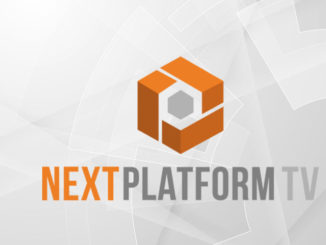
On today’s program we look at the future of Cray as part of HPE with former Cray CEO and current HPC and mission-critical systems lead at HPE-Cray, Pete Ungaro. We look at the roadmap for next-gen PCIe. Also, we get insight on strategic AI chip startup investments and close with where the opportunities might be for 5G in scientific computing.
We started off the show talking to Pete Ungaro, formerly the CEO at Cray and now general manager of High Performance Computing and Mission Critical Solutions at Hewlett Packard Enterprise in the wake of HPE’s acquisition of Cray last year. We wanted to know how things look out there for traditional HPC centers and mission critical systems in the middle of the economic uncertainty on a global scale due to the coronavirus pandemic, and also how HPE was going to make use of Cray technology across its portfolio and global reach, and how the Cray brand – and culture – was going to be preserved.
Next, we have a discussion with Debendra Das Sharma, who is an Intel Fellow and a PCI-SIG board member, about the PCI-Express 6.0 peripheral interconnect, which is in development now and which is expected to be released in 2021. We wanted to know if it will be possible to keep doubling the PCI-Express bandwidth every two years, and if so, how that will be done.
On the program today we also delve into the rationale behind big AI chip startup investments with Nicolas Sauvage, Managing Director at TDK Ventures, which just infused Groq with capital. We talk about where the opportunities are if not simply in the datacenter and how they look at a strategic investment in a company like Groq, among others.
And finally, we spoke to Andrew Wiedlea, a computer systems engineer at ESnet, which is the high speed network linking all of the US Department of Energy labs to each other and to researchers around the globe. ESnet recently put out a report on 5G networking, which you can see here, and how it will benefit science. Supercomputers are not going wireless – not at the 10 Gb/sec speeds of 5G – but a lot of things that will be feeding data into them certainly will be, and that changes the nature of supercomputing and the science it supports.
Thanks as always for tuning in. With a holiday break around the corner we’ll come at you again next Thursday instead of Tuesday.





Be the first to comment